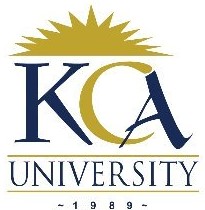 UNIVERSITY EXAMINATIONS: 2014/2015
UNIVERSITY EXAMINATIONS: 2014/2015
ORDINARY EXAMINATION FOR THE BACHELOR OF SCIENCE
IN INFORMATION TECHNOLOGY
BIT 4302 TELECOMMUNICATIONS
DATE: APRIL, 2015 TIME: 2 HOURS
INSTRUCTIONS: Answer Question ONE and any other TWO
QUESTION ONE
a) With any communications medium, the received signal will differ from the
transmitted signal due to various transmission impairments. Discuss any three of
these impairments. (6 Marks)
b) Given the bit stream below, encode it using:
(i) Bipolar-AMI (2 Marks)
(ii) Manchester (2 Marks)
(iii) Differential Machester (2Marks)
(iv) Pseudotenary (2 Marks)
0 0 1 1 0 0 1
c) Discuss briefly the importance of error detection and error correction, flow
control and recovery in data communications. (5 Marks)
d) Describe briefly any five components of a VoIP network. (5 Marks)
e) Discuss briefly the following:
(i) Fixed network delay (2 Marks)
(ii) Variable network delay (2 Marks)
f) Describe two situations when Satellite communications are more effective than
any other means of communication. (2 Marks)
QUESTION TWO
a) With the aid of a relevant diagram, describe the GSM Architecture (9 Mark)
b) (i) What kind of access technology do WLANs use and why? (4 Marks)
c) Explain briefly four techniques that can be used to increase capacity in mobile
networks. (4 Marks)
QUESTION THREE
a) Explain five properties that differentiate DSL variants. (5 Marks)
b) All DSL types are limited in distance and speed. Speed is inversely proportional
to distance. That is, a longer distance in the local loop means a lower maximum
speed that a particular DSL connection supports. Various impairments in the local
loop that attenuate or distort the signal also affect the maximum speed of certain
DSL connections. Explain briefly any five of these impairments that affect DSL
performance. (5 Marks)
c) State the causes of the following errors and how to prevent them.
(i) White noise (2 Marks)
(ii) Crosstalk (2 Marks)
(iii) Attenuation (2 Marks)
(iv) Intermodulation noise (2 Marks)
(v) Jitter (2 Marks)
QUESTION FOUR
a) (i) What three 3 fundamental properties does an antenna provide to the wireless
system? (3 Marks)
(ii) Describe how multipath interference occurs and its effect on wireless
communications. (4 Marks)
(iii) Explain how diversity antenna systems solve the problem of multipath
interference. (4 Marks)
b) Discuss the following antenna concepts:
(i) Gain (2 Marks)
(ii) Directionality (2 Marks)
(iii) Polarization (2 Marks)
c) What is Effective Isotropic Radiated Power (EIRP) and how is it calculated?
(3 Marks)
QUESTION FIVE
a) PCM (Pulse Code Modulation) is the process in which a signal is sampled, and
the magnitude of the each sample with respect to a fixed reference is quantized
and converted by coding to a digital signal.
(i) Define sampling, quantization and encoding. (3 Marks)
(ii) State Nyquist Sampling Theorem (2 Marks)
(iii) Voice has frequency ranging from (approximately) 0 to 4000 Hz. i
To reconstruct the signal when digitized, at what rate should
samples be taken? (1 Mark)
b) Mobile phone networks use the concept of “frequency re-use” in deployment of
their services.
(i) Define frequency re-use and give one fundamental requirement that
should govern frequency re-use. (4 Marks)
(ii) Determine the portion of the frequency band that can be used in one cell in
a 4-cell reuse pattern and 7-cell reuse pattern, assuming a 25 MHz band
allocated to the operator. (2 Marks)
c) Describe three ways you can accelerate the packet dispatching for delay-sensitive
flows. (6 Marks)
d) Differentiate between Fixed-assignment multiple access (FAMA) and Demandassignment multiple access (DAMA). (2 Marks)
